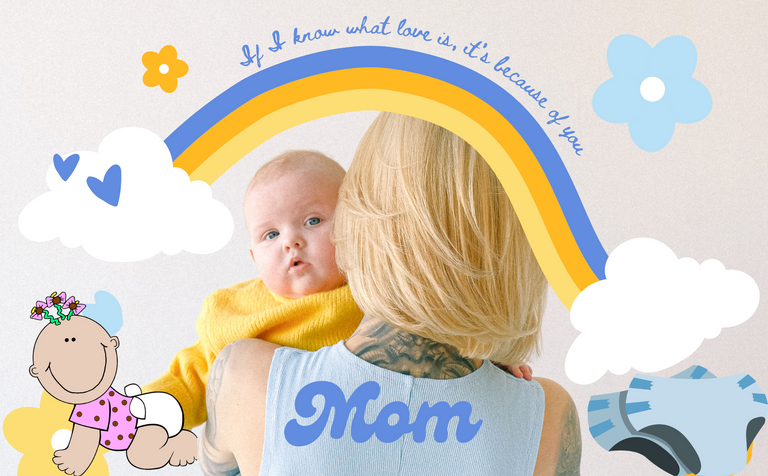Changing Diapers! Changing Lives
My friend is expecting a baby. And while I researched some of the things I could buy for her to lighten the weight of her purchase, I couldn't help but wonder how Pampers came to be. I remembered watching mom use napkins for my siblings except for the junior. By the time our last born was born, pampers had been widely accepted. Going down memory lane birthed the research for this post and today, you will learn how the most convenient baby items you have in your home came to be. Stay with me.

Baby & pampers designed on canva
Vick Mills
In 1961, Vick Mills changed how mothers took care of their baby's ability to stay clean and hygienic until they learned to use the potty. This idea was made out of convenience and mum's all around the world were happy to choose the disposable nappy because it changed the ugly business of using protective clothing for their non-toilet-trained children.
It's great to learn that Vick Mills is the reason we have the convenience that mothers experience today. They no longer have to worry about constantly bathing their babies because the Pampers protected them from having to keep using the old re-useable clothing that they had to keep washing several times.
Marion Donavon
Pampers took away the stress and replaced it with the convenience that every mother can't seem to do without today. It's interesting to note that Marion Donavon is the first mother to have invented a diaper with snaps for fastening and it was waterproof. But she couldn't make retailers buy her idea of a disposable diaper because no one saw the feasibility of a disposable nappy. She concentrated on her waterproof version until she sold the patent to Keko in 1961.
It was at this point that Vick Mills who had been researching on working on the disposable nappy took hold of it and succeeded in creating the Pampers that we know today.
Trees & Taxpaying
Even though he succeeded, it doesn't mean he did not encounter difficulty. A lot of environmental groups frowned at the idea. They were mostly concerned with how many trees were lost in order to make sure that a single baby was clean, fresh, and hygienic. It's worth noting that at least 4 & 1/2 trees are required to make a happy baby. Critics had also spread the news that it took the British taxpayers £40 m to dispose of all the used pampers every year.
CO2
The winning argument was that it takes a lot of CO2 to wash cloth napkins. And less to use pampers and dispose of them hygienically. Besides, cloth napkins often caused discomfort to the child and as we already know, rashes too. Pampers won a place in the heart of mothers regardless of what the critics said or how much it cost the government in taxes.
The best innovation
If you look around, you will see that Pampers is the best innovation that came to be. Even though a few women are still using napkins to cover their babies as a result of not being able to afford, pampers, quite a large number of mothers have opted for pampers because of the convenience. So, in every home with a nursing mother, pampers are a priority.
The fact that its presence has gone widely accepted and patronized is proof that Donovan was unto something when she tried to create the disposable nappy. Although she couldn't succeed in getting the idea accepted and looked into, Vic Mills took this unpatented design and turned it into the world's most successful industry. An industry that is still thriving today because mothers have grown dependent on Pampers to keep their babies clean, happy, and free from rashes.